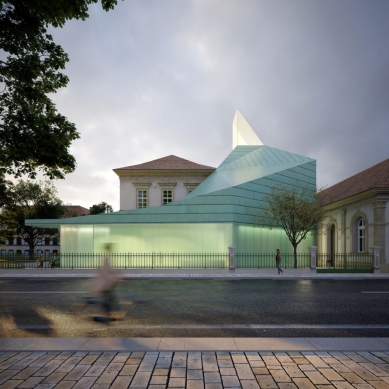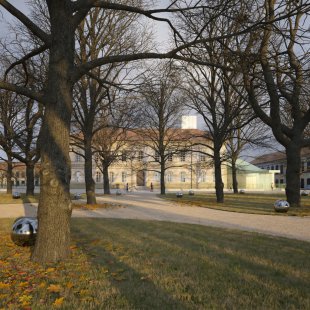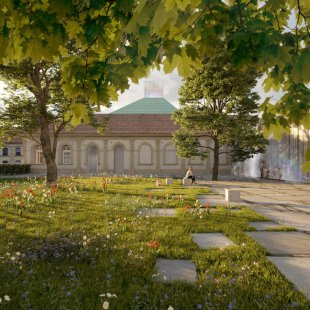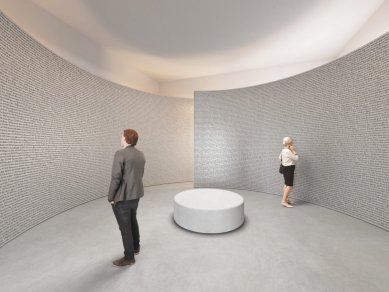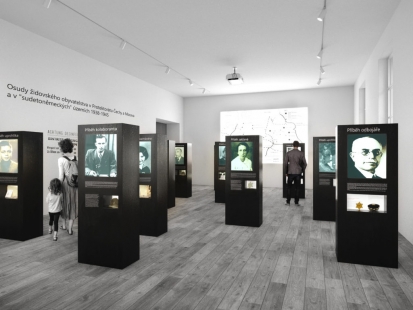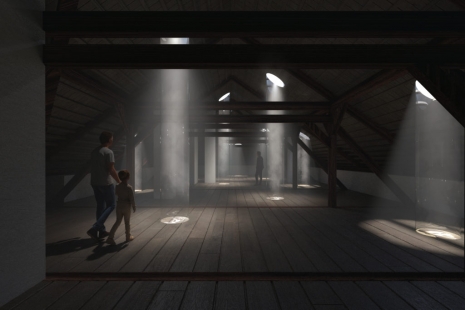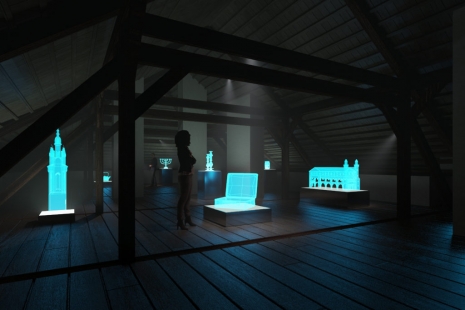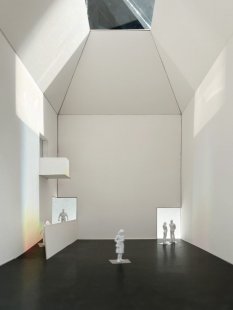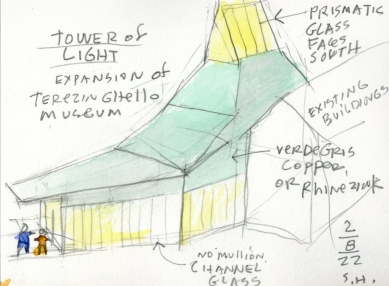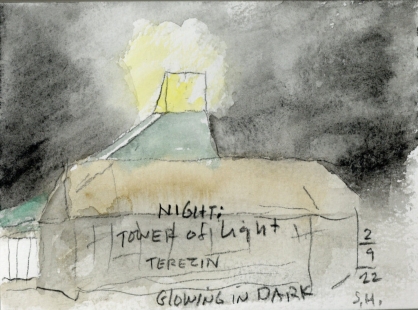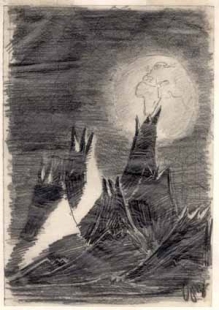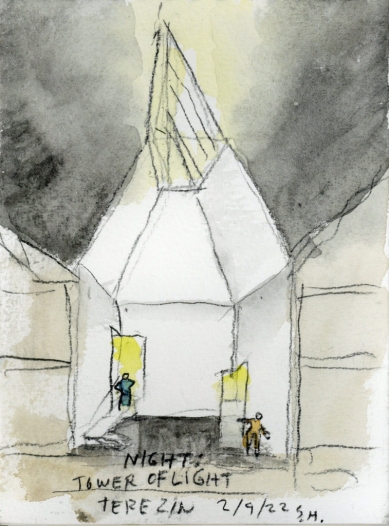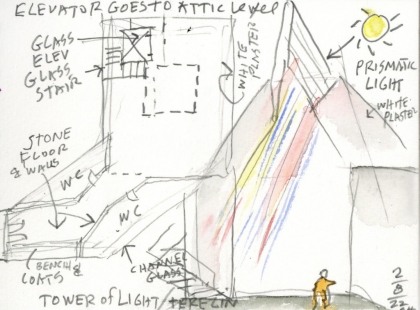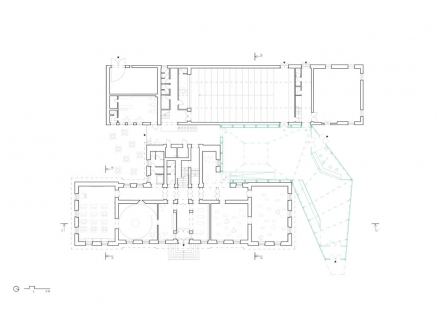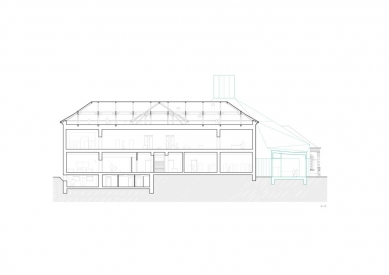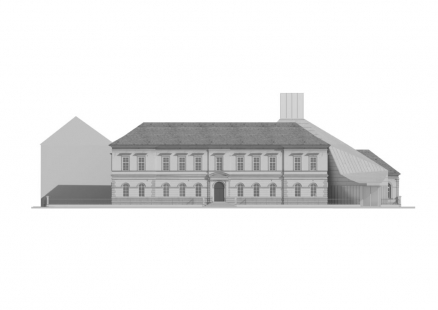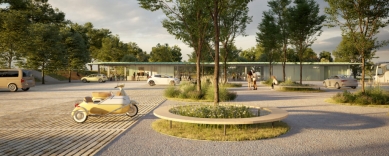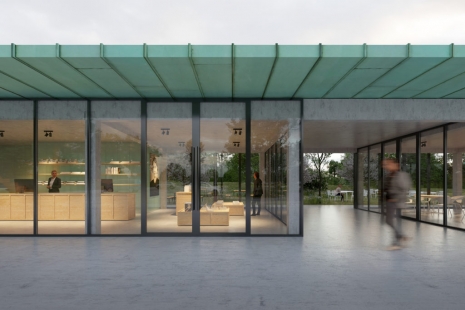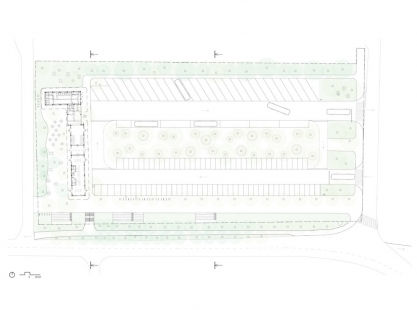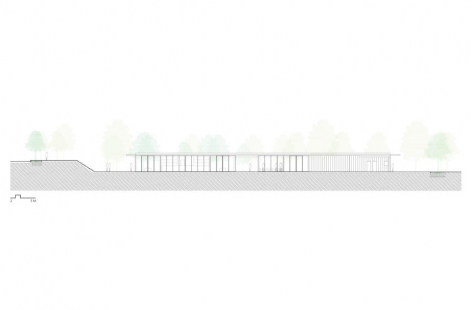
The Ghetto Museum in Terezín will get a new entrance in the form of a tower through reconstruction
Terezín - The Ghetto Museum in Terezín will be renovated according to the design by the architectural studio Skupina, collaborating with renowned American architect Steven Holl. A new entrance to the historic building will take the form of a illuminated tower. Both the content and the format of the exhibition will be new. The reconstruction includes connecting with the outdoor space, renovating the parking lot, and creating a new information center. The museum will be closed for two years due to the work.
A total of 22 studios from the Czech Republic, Slovakia, Germany, and Hungary applied for the international architectural competition. The jury selected five studios that submitted final designs. "We were looking for teams with experience in building renovations, but also teams that included landscape architects. There was unanimous agreement on the winner," said Ondřej Synek, the jury's chairman, to reporters today in Terezín. The Terezín Memorial will sign a contract with the Skupina studio within a month. This year, the design will be finalized, next year the project will be designed, and the following year a competition for the contractor will be announced. The original estimated costs for transforming the former elementary school, which serves as the museum, were 150 million crowns.
The project will be implemented in 2023 and 2024, during which the museum, visited by 220,000 people annually, will be closed. It will reopen with a new exhibition in 2025. "The need for a new exhibition prompted us to announce the competition. The current one dates back to 2001 and no longer meets contemporary requirements in either content or form. It was essential to address visitor flow, as they currently gather in one place," stated Ivana Rapavá, head of the historical department at the Terezín Memorial.
The original competition was focused solely on the exhibition, but the scope gradually expanded. "It became clear that other issues were also important, such as the parking lot, the information center, and the park in front of the museum; all of these needed to be addressed," Rapavá noted. The content of the permanent exhibition will change significantly. "We will place the history of the ghetto within a broader context, presenting the situation of the Jewish population in 1938, introducing the Terezín ghetto, and addressing what happened after the war. How quickly Terezín was repopulated. We will raise questions of post-war justice and how the survivors managed to reintegrate into society," Rapavá explained.
The form will be completely new. "The winning studio's design was the most progressive. We were impressed by the modern extension, which is motivated by the drawing 'Moon Landscape' by Petr Ginz from a Czech-Jewish family. He drew it in the Terezín ghetto, and a copy of the drawing was ultimately taken to space in 2019 by astronaut Andrew Feustel," Rapavá added.
The idea of creating a "Tower of Light" came from Steven Holl. "He received all our materials and came up with the idea of breaking down daylight into a spectrum of colors. We want to instill hope that better tomorrows are possible, that there is still something we can aspire to," said Marcela Steinbachová from the Skupina studio, which also included the parking lot in the design. Visitors will immediately find all information about Terezín upon arrival. There will be a bistro and social facilities included. They will also have access to the museum's attic, where holographic projections are planned. "Our wish is for a visit to the Ghetto Museum to be a strong experience for visitors in every respect, inspiring their interest in history," said Stanislav Lada, spokesperson for the Terezín Memorial.
Visitors in Terezín usually first head to the Small Fortress and then to the Ghetto Museum. Between 1940 and 1945, the Nazis transported over 200,000 prisoners to the Gestapo prison in the Small Fortress, the Terezín ghetto, and the concentration camp Richard in Litoměřice. Since 1947, their memory has been commemorated by the Memorial of National Suffering, later renamed the Terezín Memorial.
A total of 22 studios from the Czech Republic, Slovakia, Germany, and Hungary applied for the international architectural competition. The jury selected five studios that submitted final designs. "We were looking for teams with experience in building renovations, but also teams that included landscape architects. There was unanimous agreement on the winner," said Ondřej Synek, the jury's chairman, to reporters today in Terezín. The Terezín Memorial will sign a contract with the Skupina studio within a month. This year, the design will be finalized, next year the project will be designed, and the following year a competition for the contractor will be announced. The original estimated costs for transforming the former elementary school, which serves as the museum, were 150 million crowns.
The project will be implemented in 2023 and 2024, during which the museum, visited by 220,000 people annually, will be closed. It will reopen with a new exhibition in 2025. "The need for a new exhibition prompted us to announce the competition. The current one dates back to 2001 and no longer meets contemporary requirements in either content or form. It was essential to address visitor flow, as they currently gather in one place," stated Ivana Rapavá, head of the historical department at the Terezín Memorial.
The original competition was focused solely on the exhibition, but the scope gradually expanded. "It became clear that other issues were also important, such as the parking lot, the information center, and the park in front of the museum; all of these needed to be addressed," Rapavá noted. The content of the permanent exhibition will change significantly. "We will place the history of the ghetto within a broader context, presenting the situation of the Jewish population in 1938, introducing the Terezín ghetto, and addressing what happened after the war. How quickly Terezín was repopulated. We will raise questions of post-war justice and how the survivors managed to reintegrate into society," Rapavá explained.
The form will be completely new. "The winning studio's design was the most progressive. We were impressed by the modern extension, which is motivated by the drawing 'Moon Landscape' by Petr Ginz from a Czech-Jewish family. He drew it in the Terezín ghetto, and a copy of the drawing was ultimately taken to space in 2019 by astronaut Andrew Feustel," Rapavá added.
The idea of creating a "Tower of Light" came from Steven Holl. "He received all our materials and came up with the idea of breaking down daylight into a spectrum of colors. We want to instill hope that better tomorrows are possible, that there is still something we can aspire to," said Marcela Steinbachová from the Skupina studio, which also included the parking lot in the design. Visitors will immediately find all information about Terezín upon arrival. There will be a bistro and social facilities included. They will also have access to the museum's attic, where holographic projections are planned. "Our wish is for a visit to the Ghetto Museum to be a strong experience for visitors in every respect, inspiring their interest in history," said Stanislav Lada, spokesperson for the Terezín Memorial.
Visitors in Terezín usually first head to the Small Fortress and then to the Ghetto Museum. Between 1940 and 1945, the Nazis transported over 200,000 prisoners to the Gestapo prison in the Small Fortress, the Terezín ghetto, and the concentration camp Richard in Litoměřice. Since 1947, their memory has been commemorated by the Memorial of National Suffering, later renamed the Terezín Memorial.
The English translation is powered by AI tool. Switch to Czech to view the original text source.
